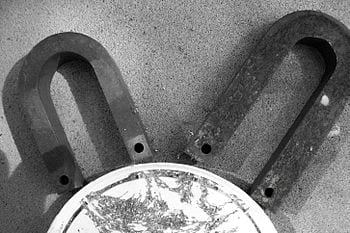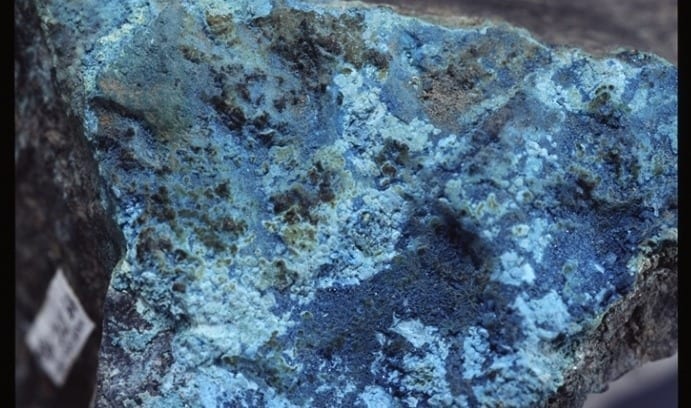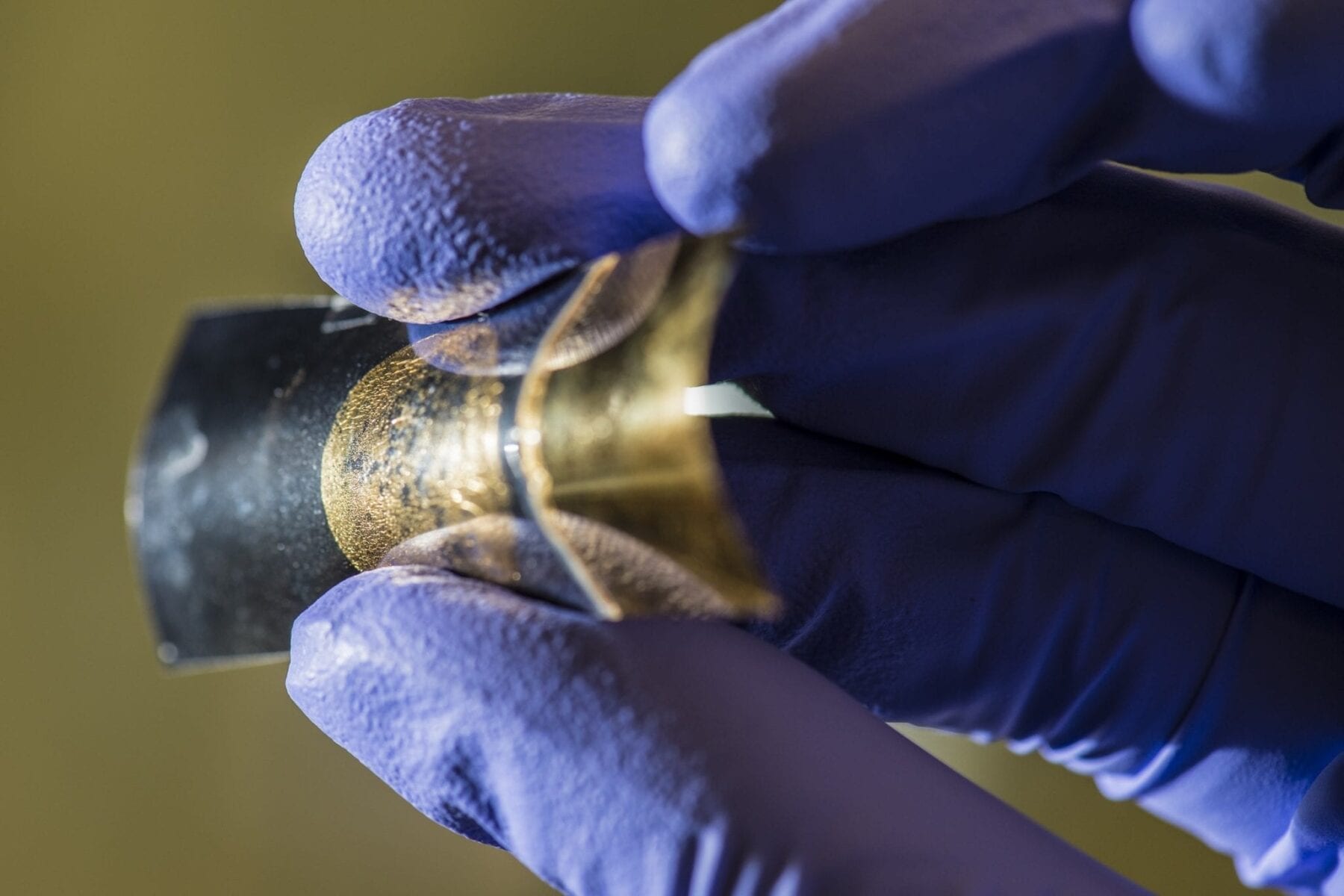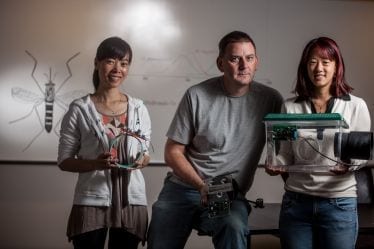
Next-generation permanent magnets will rely more heavily on iron or other abundant materials and less on rare earths
Scientists at the Department of Energy’s Ames Laboratory have observed magnetic properties typically associated with those observed in rare-earth elements in iron. These properties are observed in a new iron based compound that does not contain rare earth elements, when the iron atom is positioned between two nitrogen atoms. The discovery opens the possibility of using iron to provide both the magnetism and permanence in high-strength permanent magnets, like those used in direct-drive wind turbines or electric motors in hybrid cars.
In modern magnets, iron gives most magnets their strength, and comes with the benefits of being abundant and cheap. But the magnet recipe must also include rare earth elements, which lend magnets “permanence,” or the ability to keep the direction of the magnetic field fixed (also called anisotropy). The challenge is rare-earths materials are expensive and at risk of domestic supply shortages. So, ideal next-generation permanent magnets will rely more heavily on iron or other abundant materials and less on rare earths.
“The breakthrough here is that we see magnetic anisotropy normally associated with rare earths ions in iron,” said Paul Canfield, Ames Laboratory physicist. “This isn’t an industrial breakthrough at this point because these magnetic properties only reveal themselves at cryogenic temperatures. But, it’s a basic science breakthrough that hopefully will point the way to future technical breakthroughs.”
Canfield’s research group is internationally known for expertise in design, discovery, growth and characterization of new and promising materials. In this effort, Canfield and his colleagues, including postdoctoral research associate Anton Jesche, designed a new technique to grow lithium-iron-nitride single crystals from a lithium-nitrogen solution.
Using nitrogen in solution growth had not yet been well explored because, since we typically think of nitrogen as a gas, it’s challenging to get into a solution” said Jesche, “But we found that lithium – lightest solid element — looked like it could hold nitrogen in solution. So, we mixed together lithium and lithium-nitride powder, and it worked. It created a solution.
Then the group added in iron and, to their surprise, the iron dissolved.
“Usually iron and lithium don’t mix,” said Canfield, who is also a Distinguished Professor of physics and astronomy at Iowa State University. “It seems adding nitrogen to the lithium in the solution allows iron to go in.”
The resulting single crystals of iron-substituted lithium nitride yielded even more surprises: the opposing external field required to reverse magnetization was more than 11 tesla, as much as an order of magnitude larger than that of commercially available permanent magnets and two or more orders of magnitude larger than is typically found in single crystals. Further evidence of iron’s exotic state in this compound is the field-induced quantum tunneling found for very diluted iron concentrations at the relatively high temperature of 10 Kelvin, a temperature orders of magnitude higher than what had been seen before.
“With detailed measurements, we saw that these single iron ions are indeed behaving like a single rare-earth ion would,” Canfield continued. “And we believe this has to do with the special, fairly simple, geometry that the iron finds itself in: one iron atom positioned between two nitrogen atoms. We hope this crystal growing technique and this specific material can be a model system for further theoretical study of these rare-earth-like iron ions. As it stands, these materials have clear implications on finding rare-earth-free replacements for permanent magnets — and perhaps also may impact data storage and manipulation in quantum computer applications.”
The Latest on: Next-generation permanent magnets
[google_news title=”” keyword=”Next-generation permanent magnets” num_posts=”10″ blurb_length=”0″ show_thumb=”left”]
via Google News
The Latest on: Next-generation permanent magnets
- Breakthrough in Magnet Modeling Paves Way for Sustainable Energy Applicationson May 1, 2024 at 11:59 am
The new tomography-based models are expected to guide toward the development of sustainable permanent magnets with ultimate performance. Green power generation, electric transportation ...
- The 2025 Toyota Camry is hybrid-only and it’s more powerful than everon April 30, 2024 at 11:05 am
Now sold exclusively as a hybrid for its ninth generation, the 2025 Camry is equipped with a steady 2.5-liter, 4-cylinder engine. Paired with a permanent magnet synchronous motor for a combined 225 ...
- Lamborghini Urus SE Makes U.S. Premiere in New Yorkon April 30, 2024 at 3:41 am
Next-generation Urus debuts as the first plug-in hybrid Super SUV, and most powerful version of the most popular car ever for the company , 30 April 2024 – ...
- Weird magnetic 'skyrmion' quasiparticle could be used as a bit in advanced computing memoryon April 17, 2024 at 5:00 pm
Permanent magnets result from ferromagnetism, while antiferromagnetism is a type of magnetism in which adjacent ions behave as tiny magnets that align themselves in antiparallel arrangements ...
- The rise of magnets – from surgery to outer spaceon April 4, 2024 at 5:00 pm
But there are many other emerging applications that also use carefully manufactured magnets. Permanent magnets, the kind that keep colourful souvenirs stuck to the door of your fridge, might seem ...
- Induced and permanent magnetismon February 14, 2024 at 9:05 am
it produces its own magnetic field the magnetic field cannot be turned on and off - it is there all the time Bar magnets and horseshoe magnets are examples of permanent magnets. The iron filings ...
- Inventing the world’s strongest magneton December 6, 2023 at 10:40 am
It revolutionized the low-cost mass production of permanent magnets and enabled smaller motors and hard disk drives to be produced, thus playing a vital role in shaping modern society. Even today ...
- There Are Way More Ways to Make Electric Motors Than You Thinkon December 1, 2023 at 12:56 pm
BMW stated this fifth-generation electric ... current to create their magnetic fields, they’re cheap to build and simple to make powerful enough for a car. Permanent-magnet synchronous motors ...
- Magnetic Separation Basicson January 21, 2023 at 9:53 am
The early magnetic separation systems were mainly electromagnets; permanent magnets began making inroads when ceramic material became available and the cost to produce them decreased significantly, ...
via Bing News










